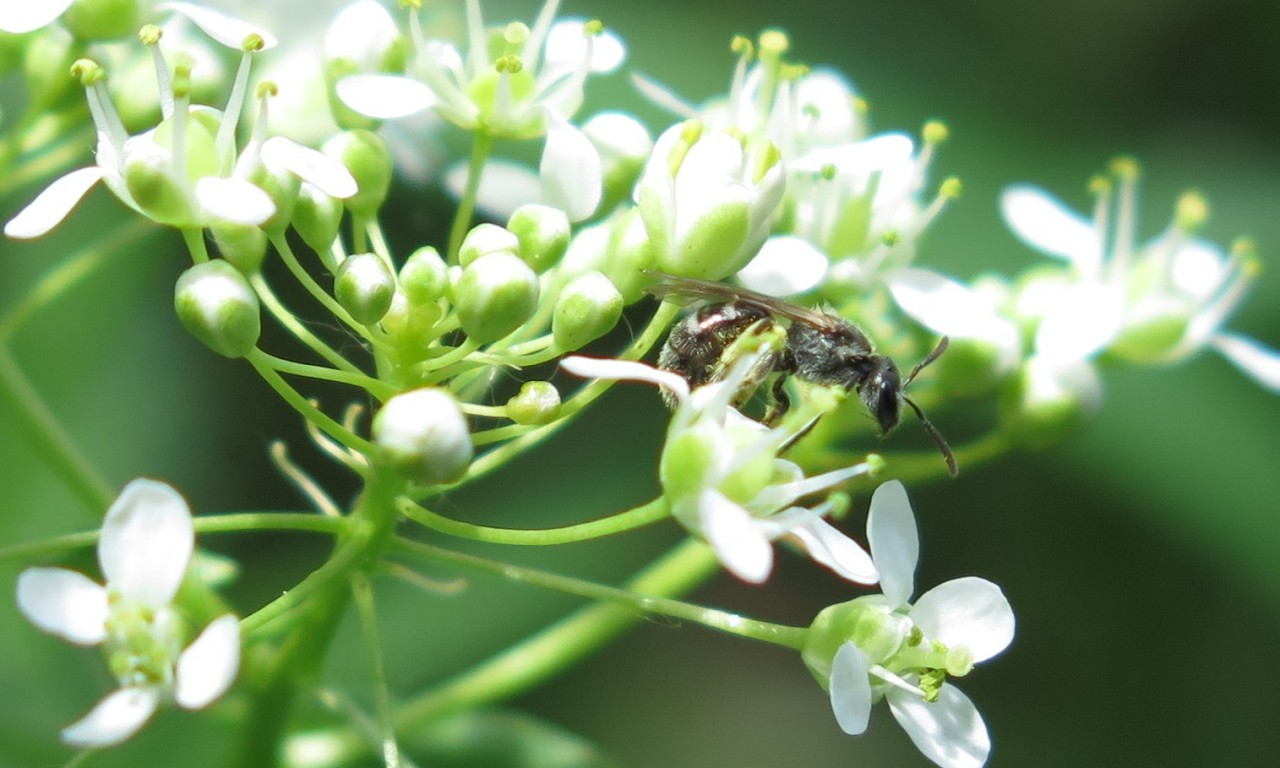The Agricultural Resources Division of Boulder County Parks and Open Space (BCPOS) and many Boulder County residents realize the importance of insect pollinators. That’s why we are actively working with our agricultural tenants and pollination experts to protect this precious natural resource.
BCPOS has created a cross-departmental team known as the Pollinator Action Team (PAT). The PAT consists of CSU extension agents and county experts from the weeds, plant ecology, wildlife and agriculture divisions. The goals of the PAT are to:
- Protect pollinators without impacting crop production
- Enhance and improve healthy pollinator populations through environmental stewardship.
- Develop baseline information for pollinator species, populations, and trends in Boulder County.
- Use the best available science to make fact based decisions that protect pollinators and support sustainable agricultural practices.
Data Collection – Two Ways
Collection of baseline data for Boulder County pollinators is being approached on two fronts.
First, a volunteer pollinator monitoring program has been established on Boulder County agricultural properties. The volunteer program began two years ago. In 2015, 10 volunteers made over 100 visits to 44 plots on 11 different properties. Plots included crop field edges, riparian areas, weedy sections bordering irrigation ditches, revegetated rangeland, and the county native seed garden. Volunteers identified pollinator insects and the plants they visited. Plots were monitored once a month from May through September.
Second, local researchers Drs. Carol Kearns and Dianna Oliveras from the University of Colorado, conducted a research project titled, “Agricultural practices on BCPOS: Implications for bee conservation.” Drs. Kearns and Oliveras monitored bee communities on 12 agricultural properties and two revegetated properties. No differences were found between the number of bee species present near conventional versus organic fields. They also found the number of bee species present correlated with the number of flowering plant species, specifically native plants. We hope to have Drs. Kearns and Oliveras back during the summer of 2016 to continue their rigorous scientific research specific to Boulder County’s agricultural properties.
During the past two years, members of the PAT have installed 10 bee blocks, or nesting blocks, on agricultural properties. In 2015, PAT members planted four 30’ X 30’ plots of native flowering habitat on the margins of agricultural properties. The PAT is actively pursuing grants for pollinator habitat surveys and training opportunities through the Xerces Society of Invertebrate Conservation.
To better understand the impacts on pollinators, the department’s Agricultural Resources Division has begun a program to test soil samples on agricultural properties for the presence of pesticides and test corn pollen for the presence of neonicotinoids. The Cropland Policy, adopted in 2011, also requires the implementation of an Integrated Pest Management (IPM) Program. What Is IPM you ask?
“Integrated Pest Management a science-based, decision-making process that identifies and reduces risks from pests and pest management related strategies. IPM coordinates the use of pest biology, environmental information, and available technology to prevent unacceptable levels of pest damage by the most economical means, while minimizing risk to people, property, resources, and the environment.” (USDA National Road Map for Integrated Pest Management, 10/1/2013)
Every agricultural tenant is required to complete an IPM checklist each year for every crop grown. Our Boulder County-specific forms also track the Environmental Impact Quotient with the goal of minimizing the use, volume and toxicity of pesticides.
In the future, under the guidance of the PAT and Cropland Policy, the department will use the best available science to make fact based decisions that protect pollinators and support sustainable agricultural practices.


